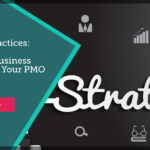It can feel like everyone has a blog nowadays, from your next-door neighbour to your old boss and everyone in between. There is a reason for the popularity of blogs, so we’re going to look at using a blog in your project management office (PMO) strategy.
At first glance, a blog may seem a bit of fluff that’s “nice to have”. You might never have thought about committing real resources and time to running your PMO blog, but there are plenty of benefits to having one.
You may think us biased – writing this on our own blog – but having a selection of articles on your PMO website is valuable. We’re going to explore:
- What a PMO blog looks like
- The benefits of having a blog for your PMO
- Whether to have an internal or external PMO blog
Helping you understand why you need to revitalise or even introduce a blog.
What goes into a blog for my PMO?
A blog is a webpage with articles and essays about a chosen subject – a PMO for example. It’s generally informal but informative; it’s there to be read by people after all!
There are lots of different articles and pieces of content you can write for your PMO blog. You can include ideas such as:
- A weekly catch up on KPIs
- Wins and successes for project teams
- Guides and how-tos for new processes
- New ideas for making projects run better
And that’s just to start. Ask your PMO team and your project managers what information would be useful for them.
Just as every PMO is different, every blog for a PMO will be different. Your teams need information and a blog is a great way to disseminate it and keep it on record for the future, too.
Why do I need PMO blog?
For PMOs, there are three major benefits of having a regularly updated blog. It is a commitment and if you stop updating your blog, you could damage your PMO’s reputation – be sure to be in it for the long term.
Establish authority
Targeting your PMO blog to an internal audience keeps your opinions and details private within the company. You can tell your project teams and the wider business details about your PMO, your functions, and your successes. It also serves to assure other business areas that your office is being effective and productive.
Having an external blog serves a different purpose. You can host your blog on:
- Medium
- The company website
And use it to spread the word about how good your PMO is. Your office and your company can become an authoritative voice in running projects, utilising a management effort, or using a specific tool. This should generate respect in your industry and with your potential clients.
Create a store of knowledge
Your blog can hold a range of information. Storing details of new processes, how a Scrum sprint should work, or how new KPIs are calculated, for example, will build a database of knowledge for your project managers. It will help onboard new staff and prevent wildly different interpretations with everything digitally accessible.
Unite projects
Blogging is a clear communication method. It is a great way to launch new ideas and blogs can accompany different comms such as:
Making them more searchable on your internal network. Having a single point of information will bring your projects together and encourage them to use the best practices that get shared.
Should the blog for my PMO be internal or external?
As we discussed above, you can have your blog as a purely internal system to communicate or have one that reaches far outside your organisation. Which one to go for will depend on several factors.
- What’s the goal of your PMO? If you want to set industry standards and be known throughout your network, go external. To stay more low-key and work on functioning well, stick with internal.
- How established is your brand? A small company in a crowded market will be difficult to get traction externally, whereas a PMO in a large and well-known company will have a step up in an external blog.
- Does your company already have a blog? An existing external blog will be easy to plug your PMO work into, starting out on your own might require permission from the board or the go-ahead from marketing.
The take home
Using a blog in your PMO communications strategy is a great way to build a knowledge store, spread the word about your work across the business and your industry, and ensure that everyone is on message in your projects.




